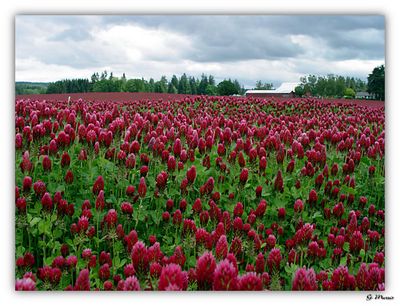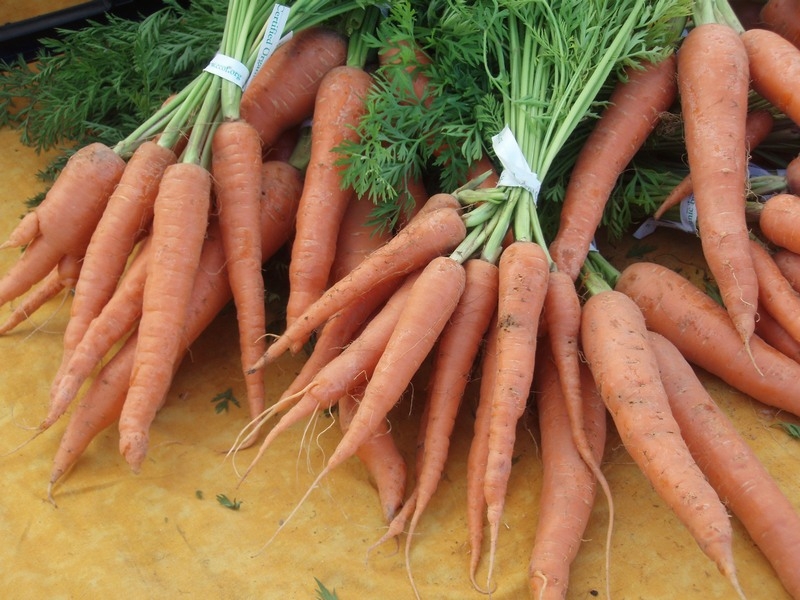Now that we’ve had a bit of rain, it’s time to get serious about planting wildflowers for spring color and to attract bees, cover crops to renew your soil, and erosion control seed and plantings to hold your slope during the winter rains.
Let’s start with the fun stuff- wildflowers. Picture your meadow or garden filled with beautiful wildflowers, attracting all sorts of songbirds, hummingbirds, dragonflies and other beneficial insects. If this is your goal, first get rid of existing weed seeds that in the soil and can smother out the slower growing wildflowers. The rains earlier this month will have germinated those pesky weed seeds so you can hoe them off now. Be careful not to cultivate over 1" deep or you will bring more weed seeds to the surface.
Next, choose a site with at least a half day of sun. Rake the soil lightly and spread the seed at the recommended rate. It helps to mix the tiny seeds with 4 times as much sand or vermiculite so you don’t spread the seed too thickly. Rake the seed very lightly into the soil and tamp it down for good soil contact. Then you can wait for the next rain or water the area by hand. It’s important to remember that after your wildflowers have germinated they must remain moist. If mother nature doesn’t cooperate , you will need to hand water a for a while- a small price to pay for all that beauty in the spring.
What’s a cover crop? These are grasses or legumes that grow during the fall and winter and then are tilled into the soil in the spring. They help prevent erosion when planted on slopes and energize the soil when planted in the garden. Preserve you topsoil and nutrients by planting a pretty cover crop like crimson clover.
 Crimson clover has beautiful magenta glowers, but its primary benefit happens below the ground- the soil gains nitrogen, a better structure and greater biological activity. Growing a legume, like clover, will "fix" nitrogen in the soil. You can reduce the amount of fertilizer you use in the spring by 1/3 to 1/2, especially in areas like the vegetable garden that need a lot of nutrients to produce all those good things to eat. If you’re going to be growing peas or beans as the garden’s next crop, though, don’t use a legume cover crop in these areas. You may end up with all vine and no peas or beans to harvest. Heavy feeders like corn or squash will really respond to the extra nitrogen.
Crimson clover has beautiful magenta glowers, but its primary benefit happens below the ground- the soil gains nitrogen, a better structure and greater biological activity. Growing a legume, like clover, will "fix" nitrogen in the soil. You can reduce the amount of fertilizer you use in the spring by 1/3 to 1/2, especially in areas like the vegetable garden that need a lot of nutrients to produce all those good things to eat. If you’re going to be growing peas or beans as the garden’s next crop, though, don’t use a legume cover crop in these areas. You may end up with all vine and no peas or beans to harvest. Heavy feeders like corn or squash will really respond to the extra nitrogen.
How do they do this? Legumes attract soil dwelling bacteria that attach to the plant’s roots and pull atmospheric nitrogen out of the air and soil, storing it on the roots as nodules. When the plant is cut down and chopped up to decompose in the garden bed, that nitrogen remains in the soil to feed the leafy growth of other plants.
Besides reducing erosion a cover crop like crimson clover can reduce soil compaction and their tap roots break up clay soil.
To plant, rake the bed, sow the seed by hand and rake again. Water to help germination if rains don’t do it for you. Next spring, chop them down when they begin to flower. Early spring is the best time to dig the clover into the soil because that dose of green manure is at it’s peak before the plant matures. After a few weeks of decomposition, you energized soil is ready for vegetable seeds and starts.
Another way to prevent erosion is to plant native grasses, herbaceous and woody plants. If you haven’t started planting a steep slope yet, you may need to use jute netting to stabilize the slope while the permanent plants are becoming established. Santa Cruz erosion mix is a quick growing grass especially suited for our conditions. You can also plant crimson clover under jute netting.
Whatever you choose, take steps now to prevent .


.jpg)

 Little Finger is unmatched for snacks, pickling or steaming. It grows to just 3-4" long and is ideal for container gardening. too.
Little Finger is unmatched for snacks, pickling or steaming. It grows to just 3-4" long and is ideal for container gardening. too.